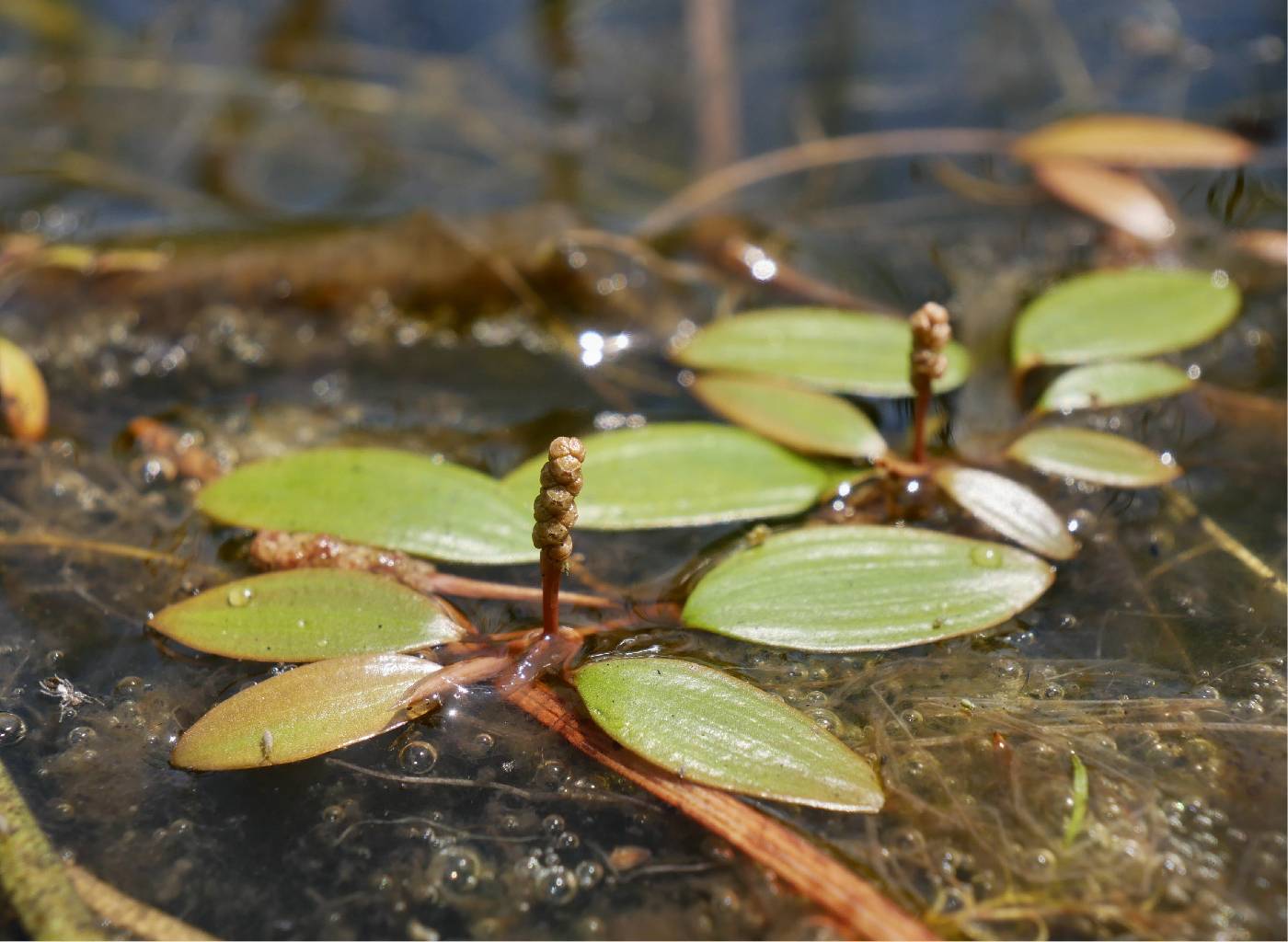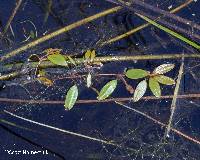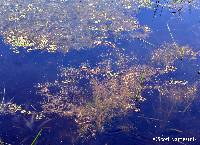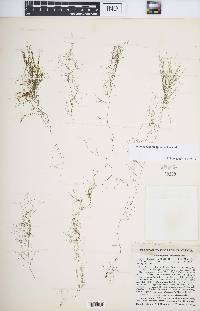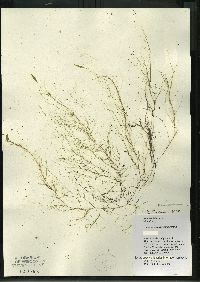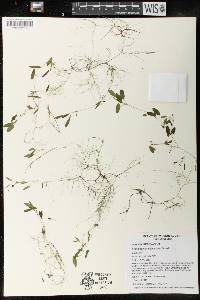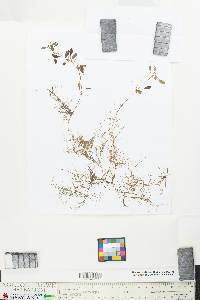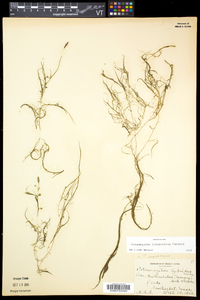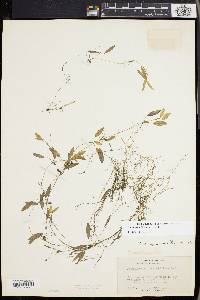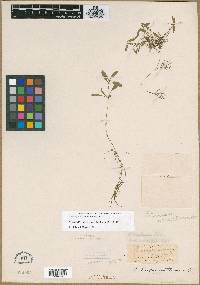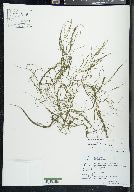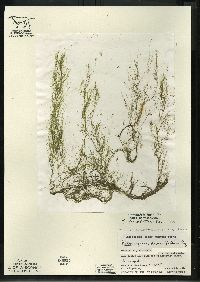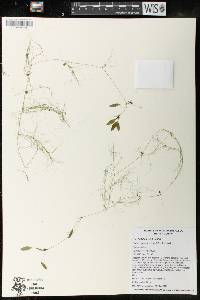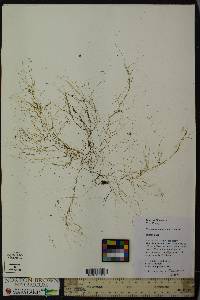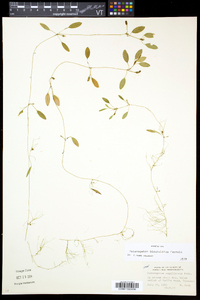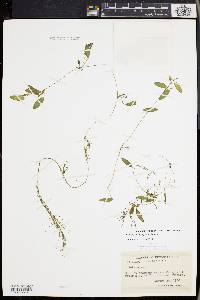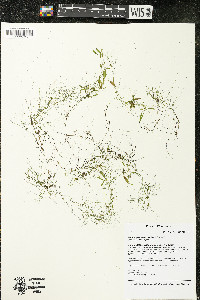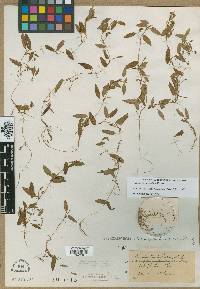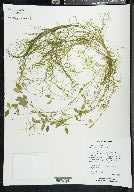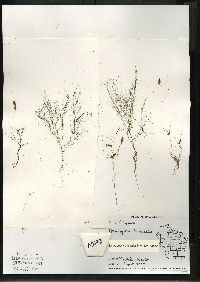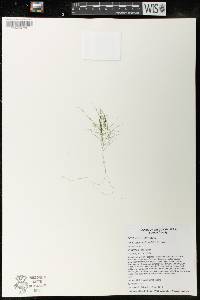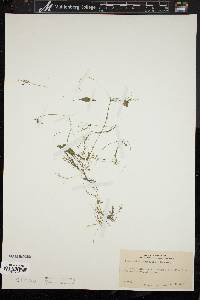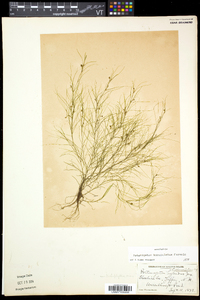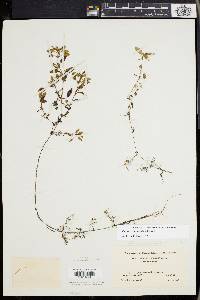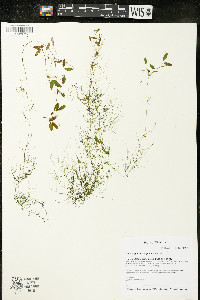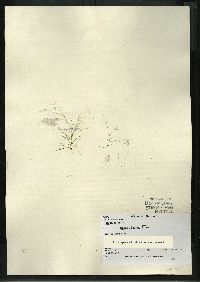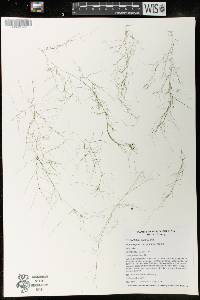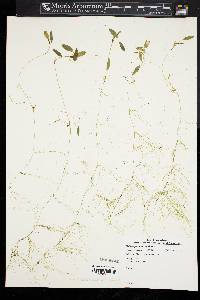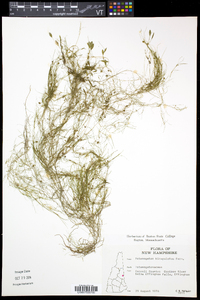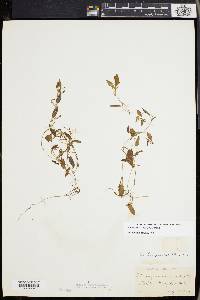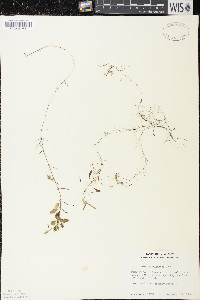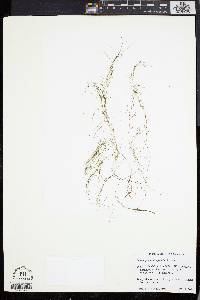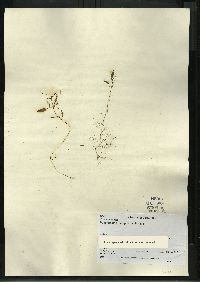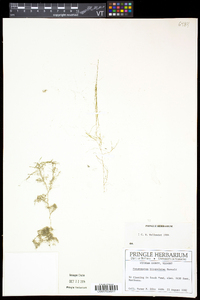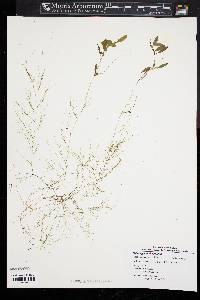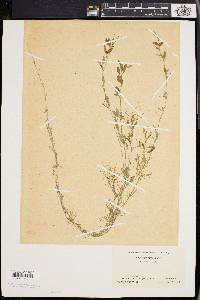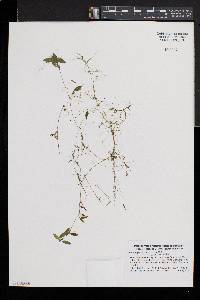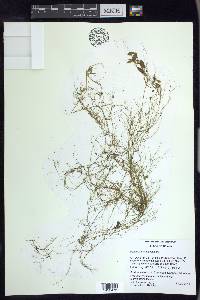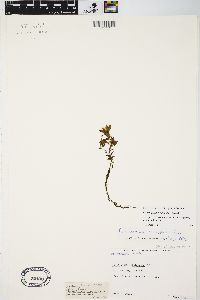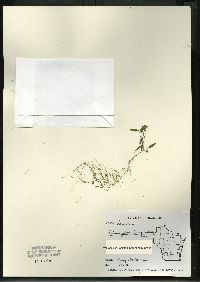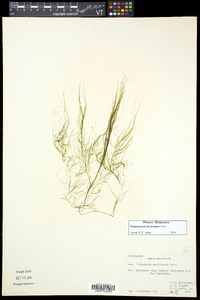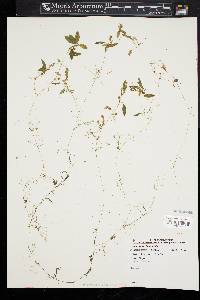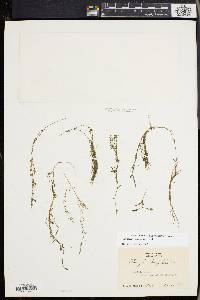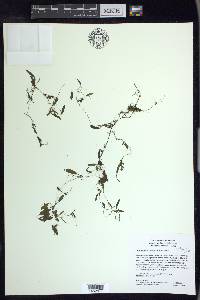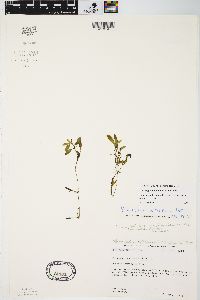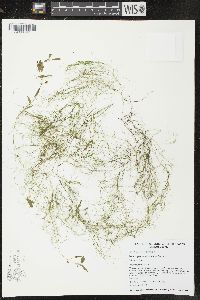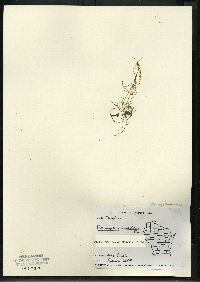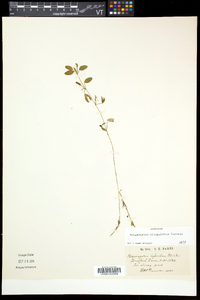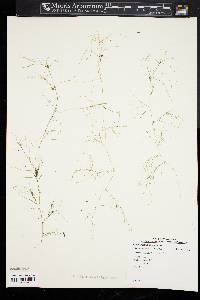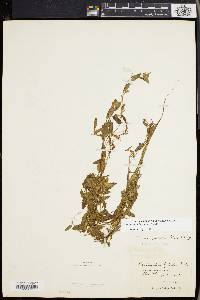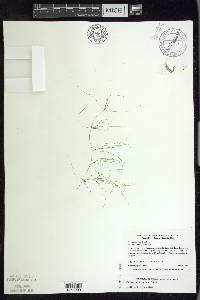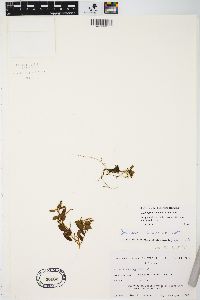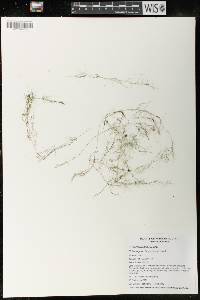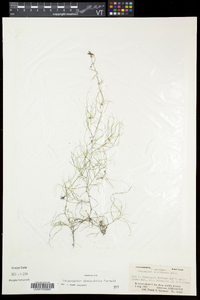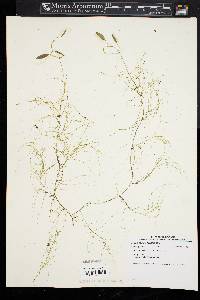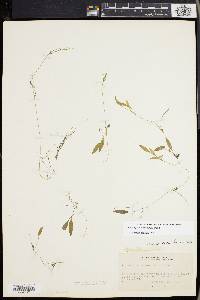Potamogeton bicupulatus
|
|
|
|
Family: Potamogetonaceae
Snail-Seed Pondweed
|
Rhizomes present. Cauline stems compressed, without spots, 10--25 cm; glands absent. Turions absent. Leaves both submersed and floating or floating absent, ± spirally arranged. Submersed leaves sessile, lax; stipules persistent to deliquescent, inconspicuous, convolute, adnate to blade for less than ½ stipule length, light green, ligulate, 0.2--1.2 cm, not fibrous, not shredding at tip, apex obtuse; blade light green to rarely brown, linear-setaceous, not arcuate, 1.5--11 cm ´ 0.1--0.4(--0.6) mm, base slightly tapering, without basal lobes, not clasping, margins entire, not crispate, apex not hoodlike, tapering, lacunae absent; veins 1. Floating leaves petiolate; petioles continuous in color to apex, 5--35 mm; blade adaxially light green, lanceolate-elliptic to broadly elliptic, 0.6--2.3(--2.8) cm ´ 1--11 mm, base tapering or rounded, apex acute to long tapering; veins 3--7. Inflorescences unbranched; peduncles dimorphic, submersed axillary, somewhat recurved, clavate, 1--10 mm, emersed axillary or terminal, erect to slightly recurved, slightly clavate, 3.5--22 mm; spikes dimorphic, submersed , globular to ellipsoid, 1.5--7 mm, emersed ellipsoid to cylindric, 3--14 mm. Fruits sessile, greenish brown, somewhat orbicular, compressed, abaxially keeled, laterally keeled, 1.1--2.1 ´ 1.1--2 mm, lateral keel without points; beak absent; sides without basal tubercles; embryo with more than 1 full spiral. Flowering early summer--fall. Acidic waters of ponds, lakes, and streams; 0--300 m; Ont.; Conn., Del., Ind., Maine, Mass., Mich., N.H., N.Y., Pa., R.I., Tenn., Vt., Va., Wis. Potamogeton bicupulatus is an uncommon species of the acid lakes and streams of northeastern United States and southern Canada. It is the final third species we have with dimorphic inflorescences and embryos with more than one full spiral. It can be separated from the other two, Potamogeton spirillus and P. diversifolius, because it has very narrow submersed leaves without lacunae and fruits with lateral keels without sharp points.
Perennial submersed aquatic herb with rhizomes 10 - 35 cm tall Inflorescence: a head-like (submersed) or cylindrical (emersed) spike of flowers, submersed or emersed, unbranched, 1.5 - 14 mm long, on a terminal or axillary stalk. Stalk upright to slightly recurved, club-shaped, 1 mm - 2.2 cm long. Flowers: greenish, tiny. Stamens four. Anthers two-chambered, with four edge-to-edge sepal-like outgrowths. Fruit: an achene, stalkless, greenish brown, 1 - 2 mm long, to 2 mm wide, more or less orbicular, compressed, keeled, without a beak. Keels three, central one sometimes toothed, lateral ones without points. Stems: clustered, slender, sparsely branched above base, compressed, jointed. Submersed leaves: more or less arranged spirally, stalkless, translucent, light green, rarely brownish, 1.5 - 11 cm long, mostly 0.1 - 0.35 mm wide, thread-like to linear with a slightly tapering base and a blunt to pointed tip (sometimes bristle-tipped), typically one-veined. Stipules adhered to base of leaf blade to less than half their length, light green, rolled up, 2 mm - 1.2 cm long. Floating leaves: (if present) more or less arranged spirally, on a 5 mm - 3.5 cm long stalk, 0.5 - 2.5 cm long, 1 - 11 mm wide, lance-elliptic to broadly elliptic with a rounded to tapering base and pointed to long-tapering tip, three- to seven-veined, leathery, firmer than submersed leaves. Similar species: The two types of inflorescences help distinguish this species. Potamogeton diversifolius also has this feature but differs by its beaked fruit, of which the lateral keels are toothed. Flowering: July to late September Habitat and ecology: Found in shallow water, especially in ponds with sandy bottoms. Occurence in the Chicago region: native Notes: Plants in the genus Potamogeton are very important to wildlife, offering habitat and food for many aquatic animals. Etymology: Potamogeton comes from the Greek words potamos, meaning river, and geiton, meaning neighbor, referring to the habitat of these plants. Bicupulatus means "having two cups." Author: The Morton Arboretum From Flora of Indiana (1940) by Charles C. Deam Indiana Coefficient of Conservatism: C = 10 Wetland Indicator Status: OBL |

